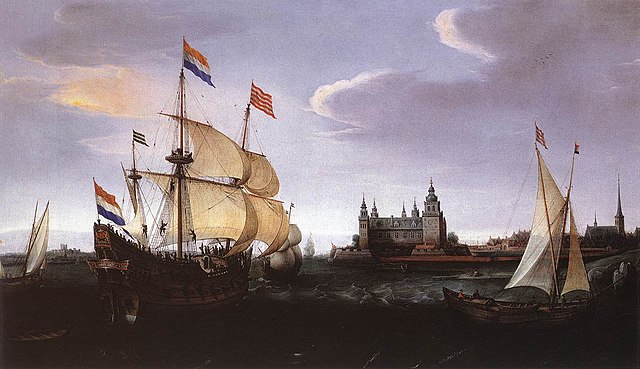Hendrik Cornelisz Vroom was a Dutch Golden Age painter credited with being the founder of Dutch marine art or seascape painting. Beginning with the "birds-eye" viewpoint of earlier Netherlandish marine art, his later works show a view from lower down, and more realistic depiction of the seas themselves. He is not to be confused with his son and pupil Cornelis Vroom.
Engraving of the artist, c. 1762.
Dutch Ships Ramming Spanish Galleys off the Flemish Coast in October 1602, 1617
View of Delft seen from the west; circa 1615: one of the earliest cityscapes in the Netherlands, and the earliest of Delft
Arrival of a Dutch Three master at Kronborg Castle, Helsingør
Marine art or maritime art is a form of figurative art that portrays or draws its main inspiration from the sea. Maritime painting is a genre that depicts ships and the sea—a genre particularly strong from the 17th to 19th centuries. In practice the term often covers art showing shipping on rivers and estuaries, beach scenes and all art showing boats, without any rigid distinction - for practical reasons subjects that can be drawn or painted from dry land in fact feature strongly in the genre. Strictly speaking "maritime art" should always include some element of human seafaring, whereas "marine art" would also include pure seascapes with no human element, though this distinction may not be observed in practice.
Rembrandt's stolen masterpiece, The Storm on the Sea of Galilee (1633).
20th-century ukiyo-e print of Boats in Snow
Willem van de Velde the Elder's The Capture of the Royal Prince during the Four Days' Battle, 1666.
The reed boat petroglyph at Gobustan.








